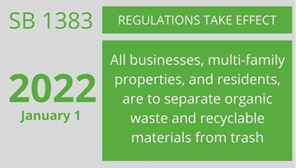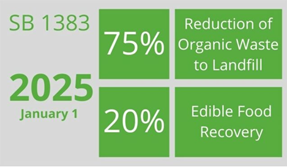GridWise® Architecture Council Blog
The viewpoints presented in this blog are the personal views of the authors who are members, associates, and friends of the GridWise Architecture Council. These viewpoints are opinions and do not necessarily represent the consensus of the Council, the endorsement of the Department of Energy, or those of the companies they work for.
Join the discussion on LinkedIn
Decarbonization of the Electric Grid
Ron Bernstein

The momentum to achieve decarbonization across all energy sectors is growing in both desire and technical ability. The North American electric grid has the potential to significantly impact the overall reduction of greenhouse gasses (GHG) by effecting change: philosophy and policies that are enacted to bring about change; in psychology and the programs created to drive awareness of the need to enact social and political change; and in processes including the fundamental technologies that can help achieve the end goals.
The electric grid is directed by these philosophies, psychologies, and processes through policies, regulations, values, and technologies. As each of these come into alignment with the need to decarbonize our planet, there are significant issues, barriers, and challenges that must be met at all levels of grid design and implementation.
The current state of the power grid relies heavily on carbon sources and the generation technologies developed over the last 100 years which have influenced the philosophies and policies that have brought us to where we are today. Here we will present a high-level view of the current issues and challenges and will summarize some of the key processes and technologies that are emerging as potential key areas of change.
The North American power grid today is largely based on fossil fuels to generate power with natural gas being the primary source; with coal, nuclear, petroleum, hydro, wind, and solar adding to the mix. Natural gas makes up roughly 45% of the total utility generation capability. Peaker plants, that provide gap generation during high demand, make up about 20% of the generation market using higher carbon producing fuels. It is crucial to address both the primary and secondary generation sources to have any chance at substantial decarbonization. The following chart paints a clear picture of the North American power generation by energy source:

Our current policies are driven by the philosophy that power is a basic right. Service to all, regardless of location is a regulatory and policy challenge. And outages, planned or otherwise, have huge implications on people, companies, and cities. Utilities struggle with balancing rural and urban distribution, working to deliver reliability with equal access. Case in point: wildfire threats in California have necessitated utilities to cut power to reduce their risk of starting a fire from their equipment, often affecting rural areas harder. Rural residents are turning to off-grid power generation as a gap measure during cuts. Inefficient gas or diesel generators are a common measure; however, they are some of the worst carbon emitters and they pose significant additional risks to people and property. Rural solar co-ops are a good alternative, but certainly not viable in low solar radiance locations. Great in Southern California, not so good in rural Maine.
It also means that power must be reliable such that utilities must manage the generation capacity to meet or exceed our power-hungry society, no matter what the cost. Therefore, added capacity, even if inefficient or financially ineffective, must be available rather than the threat of rolling blackouts (a worst-case scenario). Rolling blackouts are planned events based upon weather and demand which utilities factor into their generation capabilities. Areas affected by rolling blackouts will typically have a day or so notice from the utility, but impacts cause at-risk consumers significant hardship.
The US Department of Energy tracks power outages and their frequency and causes. From the chart below, the 2020 outages were at an all-time high and the trend of the past few years is increasing. Be it weather, sabotage, or operational issues (i.e., equipment failure, aging infrastructure), the trend points to the need to address the compounding issues facing the grid.

Infrastructure upgrades, hardening for sabotage, cybersecurity threats, and weather-related interruptions provide an opportunity to invest in the bigger picture and include decarbonization as part of the plan.
Effective change requires awareness, desire, and commitment. Science-based research has shown the predicament we are currently in has been fueled by the progresses over the last 100 years in technology, thirst for information, and the speed at which we are adapting. With these positive advancements also come the negative: we are consuming natural resources at an alarming rate and that consumption byproduct is the waste and GHGs we expel. Effective programs such as the recycling movement have shown us that public awareness can drive change. The Reuse, Reduce, Recycle campaign for waste management focused on the younger generation and through awareness campaigns they helped push the older folks to adapt. The same can be done with the way we consume energy and our thoughts around our responsibilities. California is adopting a mandatory food waste composting plan. Local authorities are already distributing containers meant to specifically hold food waste for local composting facility production. An added benefit is residents can get free or low-cost compost for their gardens.


Source: Recyclemore.com – California State Bill 1383
This CA SB 1383 program didn’t happen overnight. There is a long-term plan that started six years ago with a significtion objective to reduce organic waste up to 75% within the next three years. Programs like this pave the way for energy related awareness and conservation/management opportunities. Personally, I love this program and have started my own worm factory as a result. Worm castings are an excellent source of plant nutrients for my garden.

Policies and programs such as this can be applied to the sourcing and consumption of energy. It will take a concerted effort, but, slowly, it is happening. There has been a flattening out of the energy demand for the last 10 years compared to the massive growth from the 1950 to 2010: a good sign indeed.
Decarbonization efforts require shifting policy and mindset. The graphic below illustrates the relatively small percentage renewable energy sources are contributing to the overall energy production at about 12%.

There is some good news as the planning for new renewable sources is up significantly based on reporting from the U.S. Energy Information Administration. More wind and solar projects lead the charge. In 2022 we are seeing even more investment from recent congressional funding programs. But we have a long way to go.

New industries creating new jobs focused on these changes can help propel us forward. However, there are challenges at all levels: societal, regulatory, and technology. The push for DERs, especially solar, have focused on those capable of installing systems on their homes, but not all energy consumers have that ability. Community solar programs are popping up to help the situation. Solutions must find a balance between equitability and democratization. Infrastructure investment is required to ensure an equitable playing field is established.
Large scale social awareness is required to achieve the necessary changes. People must be educated and change must be integrated into daily life. Being aware of when energy is available and when it is not key. Using high draw devices in the middle of the day when solar is plentiful is a departure from the days when we were encouraged to use our appliances after dark. Many still run their clothes washers, dishwashers, and ovens “after hours” which meant after businesses were closed for the day and more power to the consumer was available. That model no longer holds in areas where solar is readily available from 10-4pm daily. Developing awareness campaigns to encourage running power hungry devices at this peak energy availability time is a worthy strategy. The traditional “duck curve” shown below for California identifies the key time periods of power availability and benefits of load shifting:

The original Duck Curve chart. Source: CAISO
That 10-4 sweet spot combined with a more at-home work force due to COVID suggests that there is an opportunity to combine work and household chores into that period. Bake your dinner in an electric oven during the day, keep it warm until dinner. Run the dishwasher and washing machine midday. Charge your EV during the day whenever possible and run errands late in the day. Many similar opportunities exist in the commercial and industrial sectors as well. Incentives will help as will public awareness combined with supportive rate programs.
Education and awareness start at home in schools. Younger generation-focused awareness programs have been very successful in other sectors. They will be in the energy sector as well. Likewise, trade schools need better programs to train the new workforce to build, maintain, and manage the power grid. The current aging power workforce needs help. It may not be a very high-profile career path, but there is a substantial need for entry level workers to help build out the necessary infrastructure, learn how to design and deploy energy efficient programs, and build new models for a decarbonized future.
We are on the cusp of change – for better or for worse depends upon what we do next. I, for one, believe there is light at the end of the copper wire – we will be able to adapt and succeed in meeting our goals. There may be some bumps (outages) along the way, but that’s all part of the learning process.
Author: Ron Bernstein Read more
Join us on LinkedIn to discuss this article



